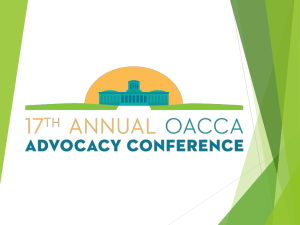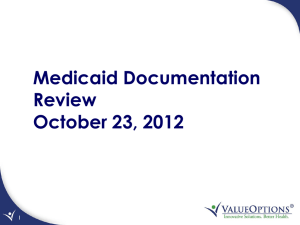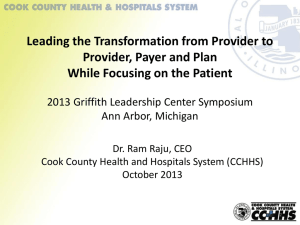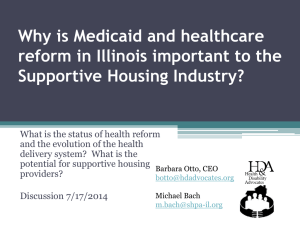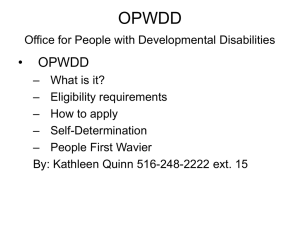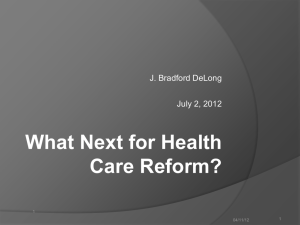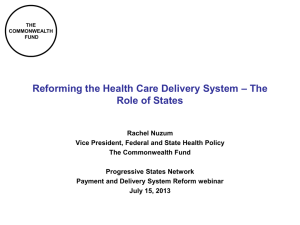The Supreme Court Decision and What it Means for Health
advertisement
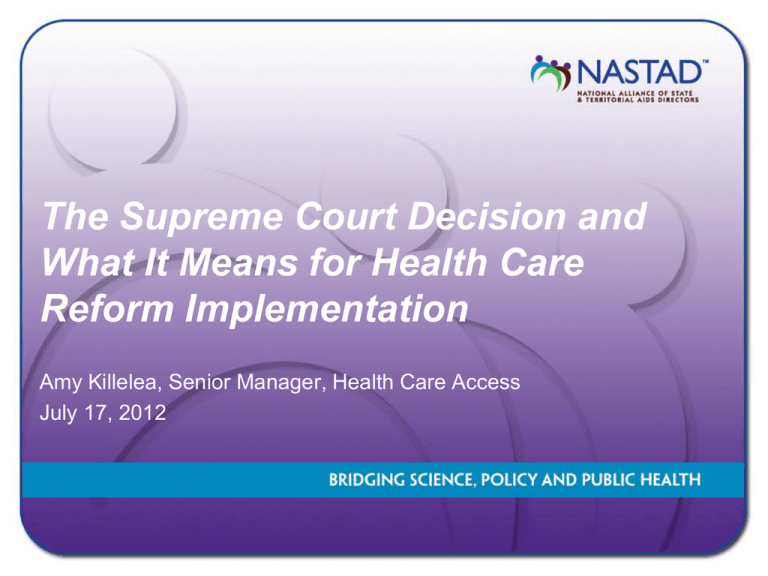
The Supreme Court Decision and What It Means for Health Care Reform Implementation Amy Killelea, Senior Manager, Health Care Access July 17, 2012 Presentation Outline Part 1: Supreme Court Decision Breakdown Part 2: The Future of the Medicaid Expansion Part 3: Next Steps Part 4: Questions Part 1: Supreme Court Decision Breakdown Supreme Court Decision Breakdown The Issues before the Court: – Can the Court hear the case now or does it have to wait until 2014 when the penalty goes into effect? – Is the individual mandate constitutional? – If the individual mandate is unconstitutional, can the rest of the law (or parts of it) still stand? – Is the Medicaid expansion constitutional? Supreme Court Decision Breakdown (continued) Anatomy of the Decision Individual mandate – upheld: – Individual mandate is not a constitutional exercise of Congress’ power to regulate interstate commerce under the Commerce Clause BUT, we must keep reading… – Individual mandate is a constitutional exercise of Congress’ power to tax – The individual mandate stands – no need to decide whether rest of the law is severable Supreme Court Decision Breakdown (continued) Anatomy of the Decision Medicaid expansion – upheld, but limited: – ACA expansion is such a significant departure from the current program that it amounts to a new program – The penalty for state non‐compliance with the expansion is limited to loss of Medicaid expansion funds; federal government cannot pull funds for the entire Medicaid program if states do not comply with the expansion Supreme Court Decision Breakdown (continued) – Narrow holding – other Medicaid reforms appear to stand: Significant reduction of DSH payments to safety net hospitals Maintenance of effort requirements requiring states to maintain eligibility and application rules until 2014 Medicaid application and enrollment rules Enhanced federal funding for updating Medicaid IT systems in preparation for expansion Part 2: The Future of the Medicaid Expansion The Future of the Medicaid Expansion What happens in a state that does not comply with expansion? The Future of the Medicaid Expansion (continued) Medicaid Coverage of Low‐Income Adults, January 2012 The Future of the Medicaid Expansion (continued) BUT, there are still plenty of reasons a state will continue with expansion: Federal government pays 100% of expansion costs for 2014-2016 and gradually reduced to 90% in 2020 and beyond Other reforms (e.g., DSH payment reductions) make it difficult not to expand because of the increased pressure on hospitals without increased revenue from insured patients Uptake may be slow, but states have generally come around to Medicaid and CHIP expansions The Future of the Medicaid Expansion (continued) State Medicaid Reform Implementation Activities Map created using data from Kaiser Family Foundation The Future of the Medicaid Expansion (continued) What to look for moving forward: – HHS/CMS will likely release information/guidance about how they are interpreting the ACA ruling Clarify the implications on other pieces of reform Answer questions from states, including whether there will be flexibility around incremental expansion – Regulations on essential health benefits requirements for newly-eligible beneficiaries still forthcoming – If/when will states have to notify HHS/CMS about whether they will expand Part 3: Next Steps Next Steps (continued) The ACA is the Law of the Land, and Implementation Will Continue Next Steps (continued) State Progress on Exchanges Map created with from Kaiser Family Foundation and Center on Budget and Policy Priorities Next Steps (continued) Using the Health Care Reform Implementation Plan and Assessment – Relationship with state planning body, exchange board, and other agencies? – Opportunity to participate in essential health benefits benchmark plan decisions? – Opportunity to participate in discussion and planning around Medicaid expansion? IT system readiness Benefits package How can health departments be part of the planning and dialogue around state implementation? Questions Resources National Alliance of State & Territorial AIDS Directors (NASTAD), www.NASTAD.org HIV Health Reform, http://www.hivhealthreform.org/ AIDS United, www.aidsunited.org Treatment Access Expansion Project, www.taepusa.org HIV Medicine Association, www.hivma.org Health Care Reform Resources – State Refo(ru)m, www.statereforum.org – Center on Budget and Policy Priorities, www.cbpp.org – Kaiser Family Foundation, www.kff.org – Healthcare.gov, www.healthcare.gov



